Art is defined as “the expression or application of human creative skill and imagination.” I can’t think of a better way to describe Dalton Summit’s 1970 Pontiac GTO. The car’s history is as brutal as it gets for a vehicle, short of being sent to a crusher or used as an airport rental. It left the factory with a 350-hp 400 ci V8 and automatic transmission during the climax of the Detroit horsepower wars. But as with so many performance cars, one wrong move by the driver left the GTO in a salvage yard in Big Spring, Texas, during the 1970s.
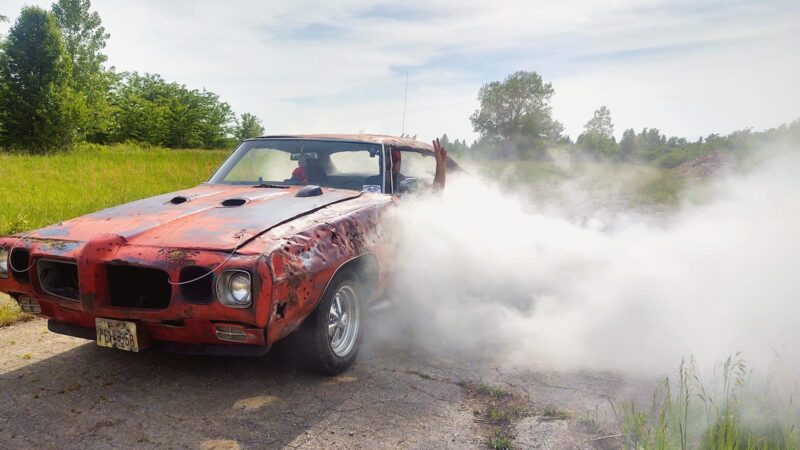
More Bullet Holes than Bonnie & Clyde’s Model A Ford
At some point during its arrival at the salvage yard, the GTO was mistaken for the less valuable Pontiac Le Mans. Without its John Z. DeLorean knighted three-letter royalty status, the GTO became a victim of Texas shenanigans. From the late 70s to the early 80s, shooting at the car was a holiday tradition for the yard’s owners. It wasn’t until after the car’s bodywork resembled Swiss cheese that the car’s VIN proved it was a real GTO – oops!
Unsurprisingly, the car was deemed unsavable and stayed collecting rust, becoming a two-door pot for a cactus as it sat in the dirt for a few more decades. That all changed in 2021 when it became part of a 260+ vehicle auction as the yard needed to liquidate its rusty inventory. Images of the car were posted online where Summitt first discovered the old goat being described as the world’s worst condition Pontiac GTO.
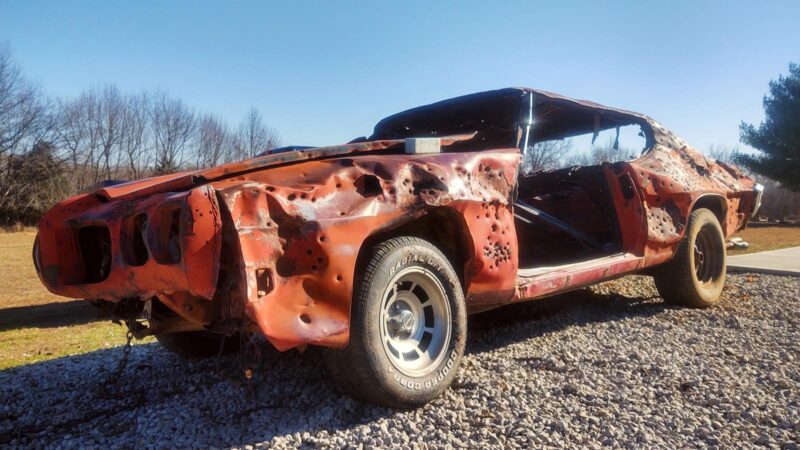
Whether out of empathy or curiosity, Summitt threw down a $200 auction bid for the car most people would consider to be a giant paperweight than an actual vehicle. Nevertheless, Summitt won the auction and became the new owner of a Pontiac GTO that sustained 40 years of neglect and more bullet holes than Bonnie and Clyde’s Model A Ford.
From Scrap to Scamper
Credit to Summitt for taking on a project car that looked like it took a road trip through the nine circles of hell. He decided that if he was going to tackle a challenge like this, it should be documented on YouTube, on his channel Pole Barn Garage. So after a 30-hour round trip, the GTO gained a new name, the “Holey Goat”, and was parked under a roof for the first time in generations.
If we lived in Mad Max‘s post-apocalyptic world, Dalton Summitt would be considered a black thumb for being able to get things running through means that aren’t exactly textbook.
If we lived in Mad Max‘s post-apocalyptic world, Dalton Summitt would be considered a black thumb for being able to get things running through means that aren’t exactly textbook. He is the first to tell you that anything you see in his YouTube videos concerning the Holey Goat should not be taken as the “right” way to do it, but more as a “that’ll work” philosophy, as he is a master of jerry-rigging.
After 40 years of neglect, the GTO had no interior apart from a thriving cactus plant and the relics of a steering wheel. The body required extensive physical therapy with a hammer to straighten out critical areas. However, the car’s one good piece of metal was its frame which had no rust at all. This crucial detail saved it from being put out of its misery.
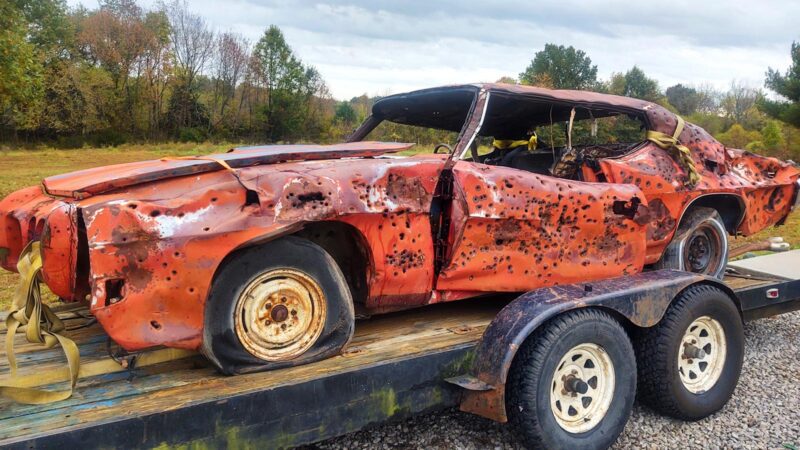
But rust-free frame or not, the rest of the car was a project that would scare off most car builders. Yet, none of the car’s daunting list of issues distracted Summitt from his artistic vision of a zombified muscle car rising from the dead to wreak havoc on the streets with eight thumping cylinders.
The GTO’s original engine, transmission, axles, and transmission tunnel were included with the purchase, all of which were in the same condition as the bodywork – minus the bullet shrapnel. Summitt is determined to get the original 400ci V8 restored and put it back into the car. However, that would be a project in and of itself. To save time, the Holey GTO runs using a 6.6-liter V8 borrowed from a 1969 Pontiac model as a “close-enough” heart transplant.
The GTO’s original engine, transmission, axles, and transmission tunnel were included with the purchase, all of which were in the same condition as the bodywork – minus the bullet shrapnel.
A 20+ video series on the Pole Barn Garage YouTube channel documents the car’s resurrection. Every nut and bolt needed to be drowned in oil before removal. The fact that the vehicle moves, let alone spin donuts and perform as a daily driver, is a testament to ambition, skill, and WD-40.
The car’s look can best be described as a 70s-era street machine sporting a jacked rear-end to fit large rear tires wrapped around chrome Cragar wheels. A set of functional shining chrome side exhaust pipes complete the look of popular muscle car ‘mods’ during the Gerald Ford administration.
On the Road Again
Since putting the GTO back on the road, Summitt has taken the car to shows and embarked on a 2,000+ mile road trip with his son to reunite the car with one of the brothers who used to shoot at it. Upon seeing his old shooting target alive and running, he said, “it just thrills me to my toes,” with a huge smile and utter amazement before going for a ride.
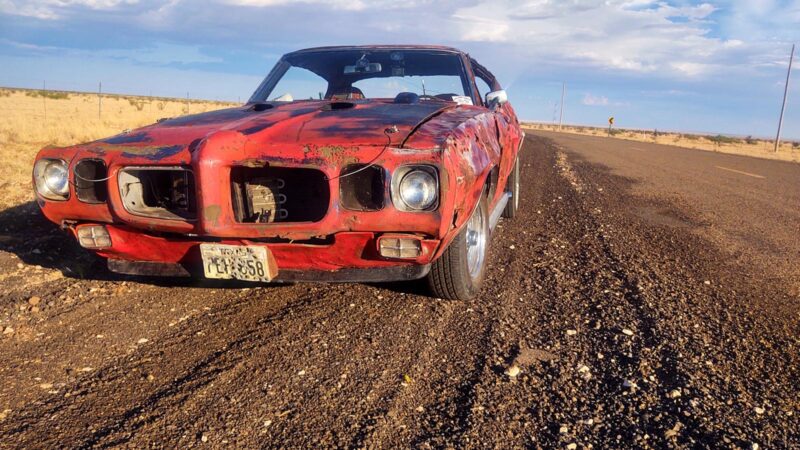
Plans for the Holey Goat include entering it in car shows and using this rusty, bullet-wounded, hell mobile to crash the party and steal attention away from prestigious, pristine collector cars. According to Summitt, considering how quickly he put the car together, the car is reliable; however, it whistles on the highway from the wind rushing through its many “weight saving” body holes.
Automotive Artistic Merit
Artistic merit and automobiles go together like a well-oiled gear mesh with a mutual understanding. The car as a concept would be nowhere without art inspiring its designers and engineers to create machines that go beyond the purpose of transportation. Examples of this can be found in the gold insulated engine bay of a 1992 McLaren F1, the “Screaming Chicken” hood graphic on a 1977 Pontiac Trans Am, or the silhouette of a Volkswagen Beetle.
The Holey Goat project started as a challenge and became a rolling symbol of second chances and redemption.
As one hand washes the other, cars have a habit of inspiring artists in all forms of media. A simple odometer inspired Stephen King to write Christine. Certain vehicles become TV and movie stars, achieving celebrity status. Museums worldwide have become safe havens for rare, antique, or desirable cars to be admired and studied for the complex works of art they are.
The distinct form of the automobile becomes a 3D canvas for creative minds to bring unique ideas into the physical world. Whether it’s a six-figure mural on the hood of a 1964 Chevrolet Impala or a 1,000-hp engine cobbled together from salvaged parts, cars continually serve as inspiration for exciting ideas and stories. The Holey Goat project started as a challenge and became a rolling symbol of second chances and redemption.
Patron Saint of Project Cars
Dalton Summitt’s 1970 Pontiac GTO is a rolling sculpture that took 40 years to complete. When I first saw photos of the car, I was stunned by its visual appearance. Some might call it scary. However, fear quickly shifts to joy upon seeing it move and run. This car needed skill and creativity to get to its current condition. Furthermore, it provokes physical and emotional reactions wherever it goes. If that doesn’t make it a work of art, I don’t know what does.
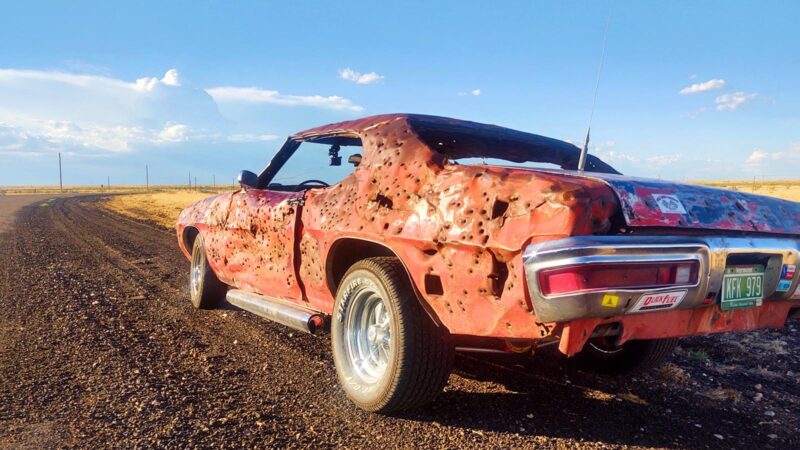
The car challenges conventional thinking and channels the unlimited potential of imagination. The Holey Goat should be considered the patron saint of project cars. An oil-burning testament to the “no excuse” mentality and worshiped via profanity-filled prayers while turning wrenches.
Praise be the Holey Goat, for it has risen, as all project vehicles shall at the hands of flesh and bone. With parts old and new, oiled by blood and sweat, the wheels will turn, and the fuel will ignite. Self-reliant power, praise Holey Goat, our patina saint of V8.





















